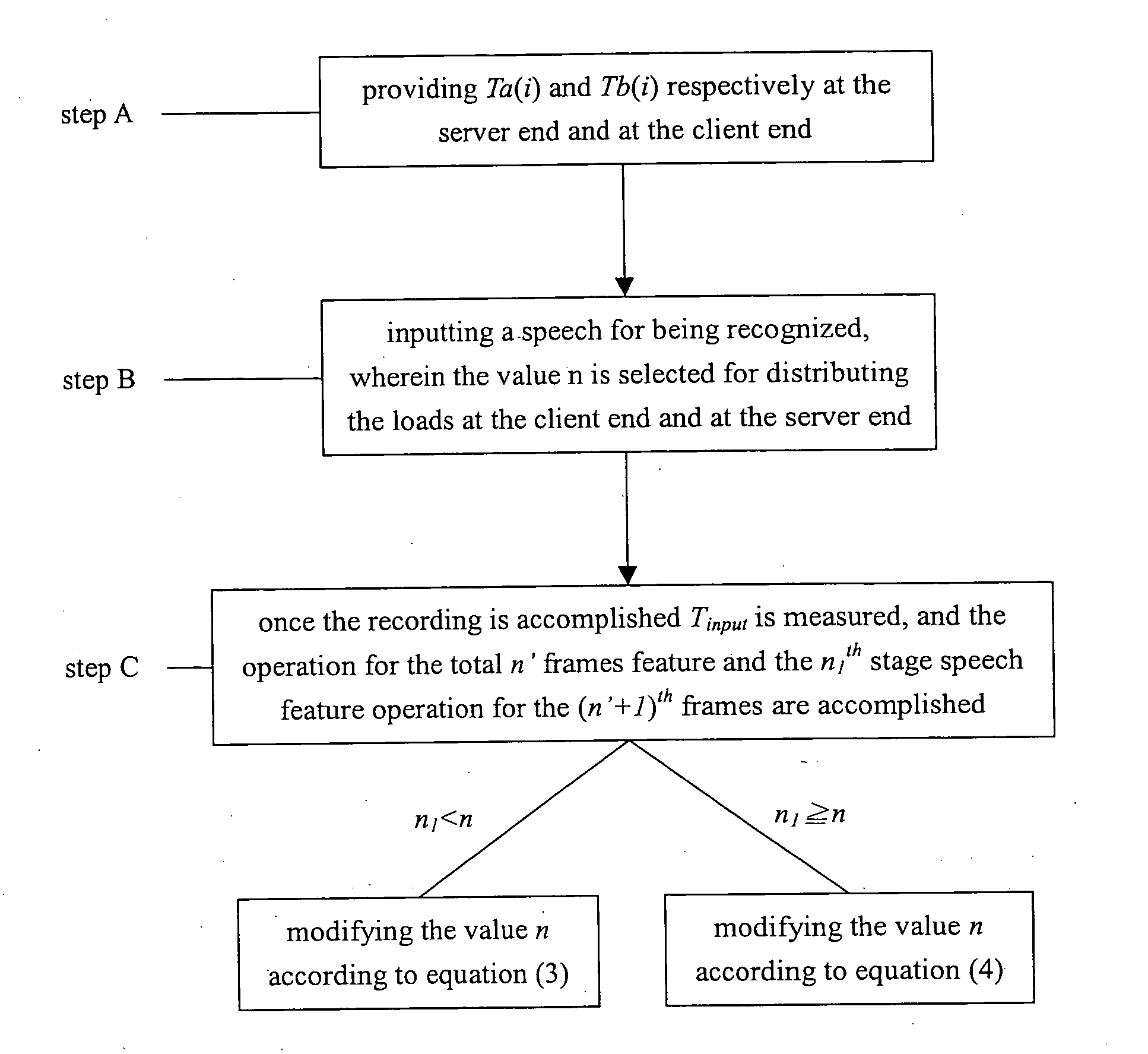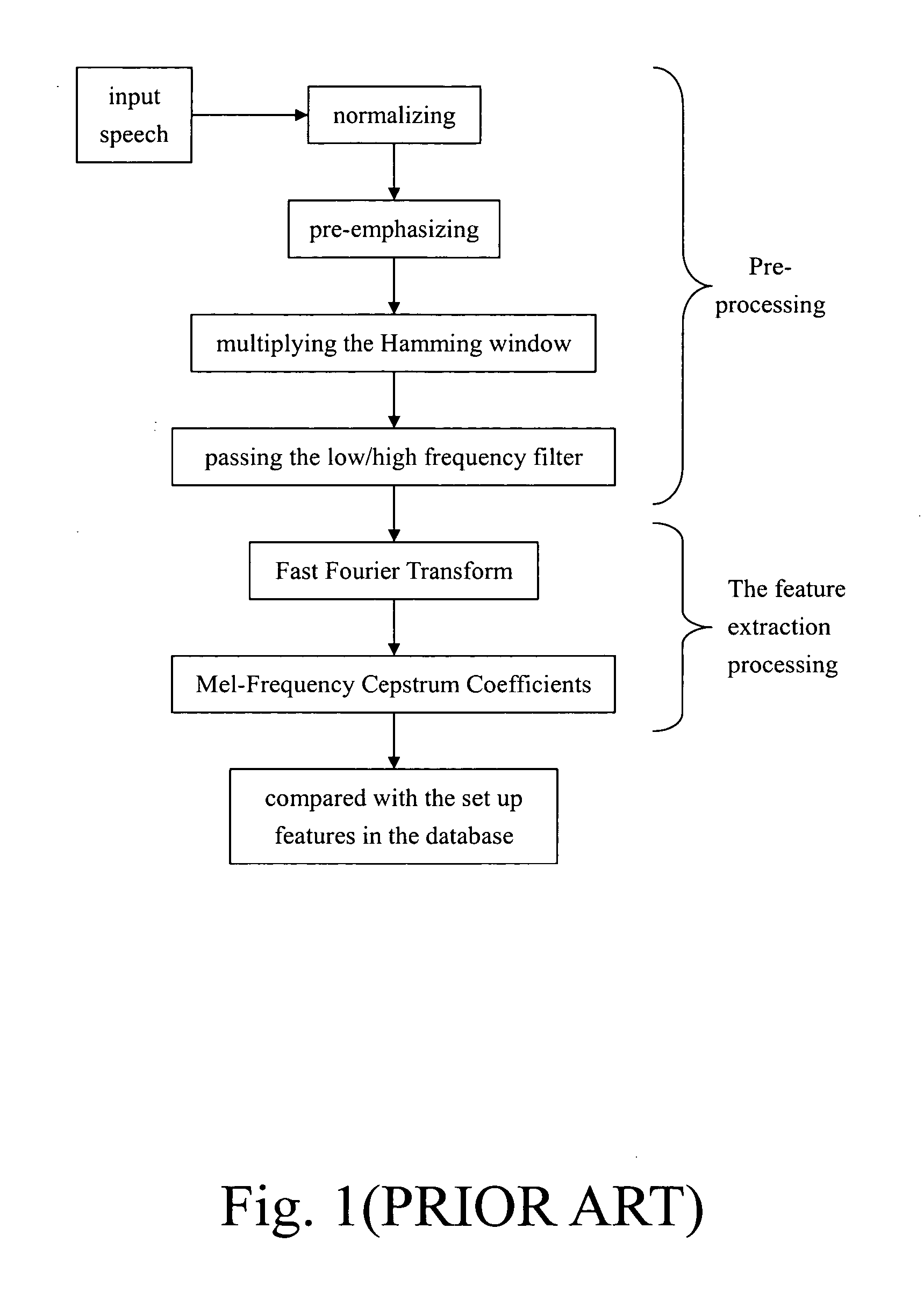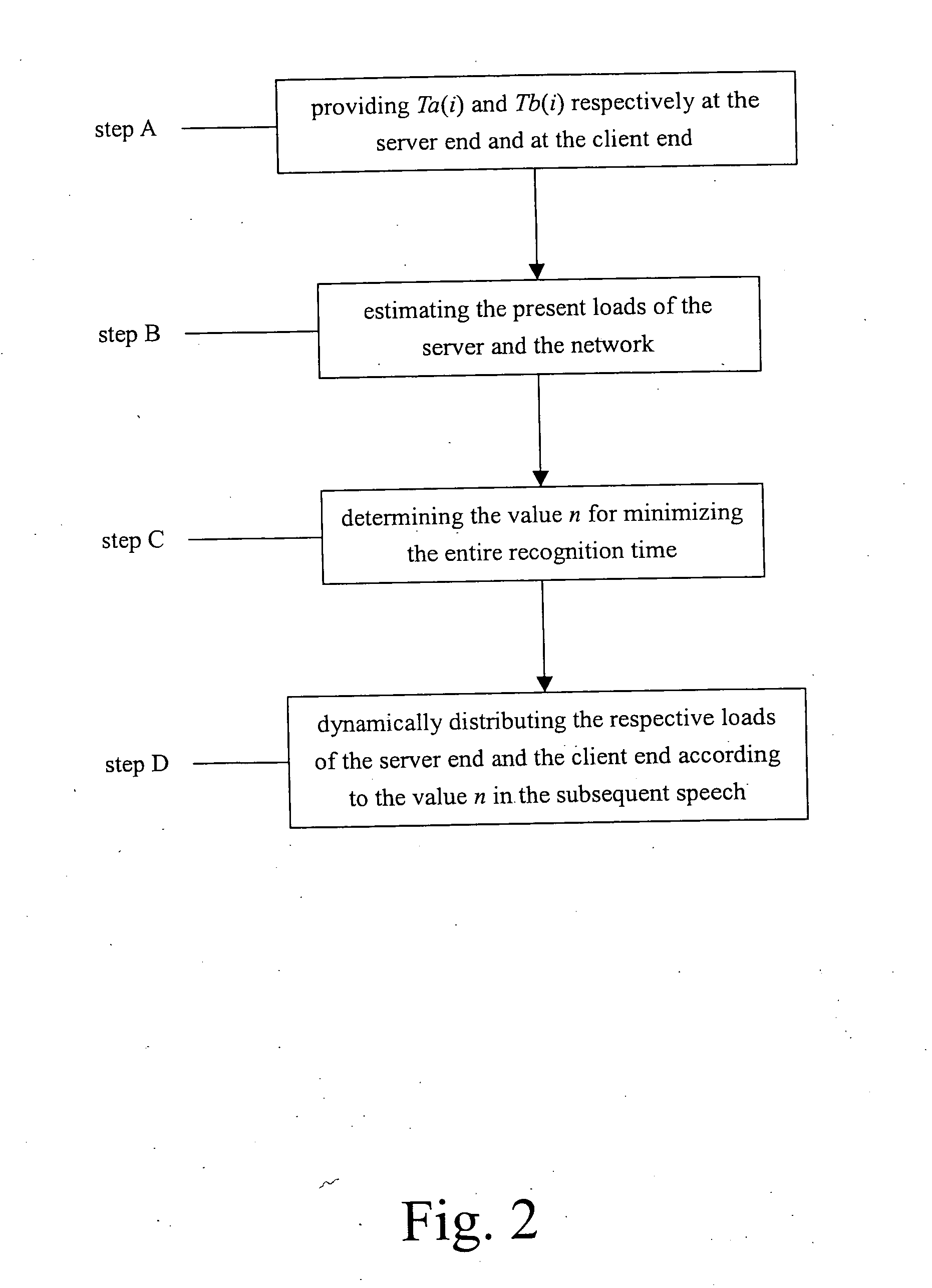Method for optimizing loads of speech/user recognition system
a speech/user recognition and load optimization technology, applied in speech analysis, speech recognition, instruments, etc., can solve the problems of increasing the load of the central processing unit and the network, the excessive waiting time of many users in the queue, and the limitation of the input/output device of most world wide web users
- Summary
- Abstract
- Description
- Claims
- Application Information
AI Technical Summary
Benefits of technology
Problems solved by technology
Method used
Image
Examples
Embodiment Construction
[0066] The present invention will now be described more specifically with reference to the following embodiments. It is to be noted that the following descriptions of preferred embodiments of this invention are presented herein for the aspect of illustration and description only; it is not intended to be exhaustive or to be limited to the precise form disclosed.
[0067] Please refer to FIG. 2, which is a flow chart for one of the preferred embodiments of the method for optimizing the load of the speech / user recognition system according to the present invention. To begin in the beginning, because the information about the central processing unit configured to the server end and the client end is publicly known in advance, the computation time for the recognition engine to process the feature at each stage respectively at the server end and at the client end is provided in step A. The computation time must be a factor of the real time with respect to the input time. Therefore when the ...
PUM
 Login to View More
Login to View More Abstract
Description
Claims
Application Information
 Login to View More
Login to View More - R&D
- Intellectual Property
- Life Sciences
- Materials
- Tech Scout
- Unparalleled Data Quality
- Higher Quality Content
- 60% Fewer Hallucinations
Browse by: Latest US Patents, China's latest patents, Technical Efficacy Thesaurus, Application Domain, Technology Topic, Popular Technical Reports.
© 2025 PatSnap. All rights reserved.Legal|Privacy policy|Modern Slavery Act Transparency Statement|Sitemap|About US| Contact US: help@patsnap.com



